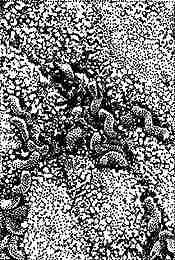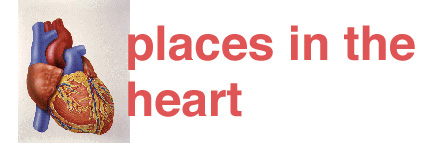The Guts of the Matter
Everybody knew the facts about ulcers. Caffeine could trigger an attack. Spicy food should be shunned. Stress had to be avoided at all cost. People with ulcers were resigned to consuming bland food and Malox.
That was until 1983 when Barry Marshall and Robin Warren, two physicians from Perth in Western Australia, published a theory so fantastic that it drew scorn from colleagues. They said that diet and stress weren't responsible. They proved that the cause of most ulcers was a bacterium called Helicobacter pylori that lurks in the stomach lining of most patients with gastritis and ulcers.

Strands of H. pylori under an electron microscope.
The inside of the stomach is a veritable pit of gastric juice composed of enzymes and hydrochloric acid that can eat through most anything. That's why a thick lining of mucus layers and protects the stomach lining. And it is there that Helicobacter pylori hide.
This bacteria is common. Estimates are that 50 percent of people over age 50 in the United States are infected, according to the Helicobacter Pylori Foundation. Although the infection may be present, only 10 to 15 percent of those infected go on to have an ulcer. However, 60 percent to 80 percent of people with gastric ulcers and 90 percent of those with duodenal ulcers have the bacterium, according to Medicine Professor David Kearney, who specializes in gastroenterology at the UW.
Kearney and colleagues see patients at a specialized Helicobacter pylori clinic at the Veterans Administration Puget Sound Health Care System in Seattle and Tacoma.
For those who suffer from ulcers, he recommends treatment with a proton pump inhibitor (drugs such as cholriythromiocin and oxoxymicin metronidazole) in combination with two antibiotics. The inhibitor reduces the production of acid and the antibiotics attack the bacteria. Kearney said that this regimen dramatically lowers the recurrence rate of ulcers.
"Previously, up to 70 percent of people with duodenal or gastric ulcers would have a recurrence within a year. This lowers the rate to less than 10 percent," he says.
Formerly, doctors would use an endoscopy to detect an ulcer. That meant sedation, an IV, and looking into the stomach with a tube. Now, there's a simple breath test that can detect the presence of the bacterium. The test can't confirm that there is an ulcer, but if a patient comes in symptoms of ulcer and the Helicobacter pylori is present, it may be likely that the antibiotics in combination with an acid reducer can solve the problem.

Barry Marshall
Just as ulcer patients lives have changed, so have the lives of Barry
Marshall and Robin Warren. The pair have won the Warren Alpert Prize from
the Harvard Medical School and Germany's Paul Ehrlich Prize. Marshall won
the prestigious Albert Lasker Award in 1995 and both men have been mentioned
as possible Nobel Prize winners. As an Australian colleague told the press,
"It is one of the major breakthroughs in this century. They both should
get it."--Julie Garner
